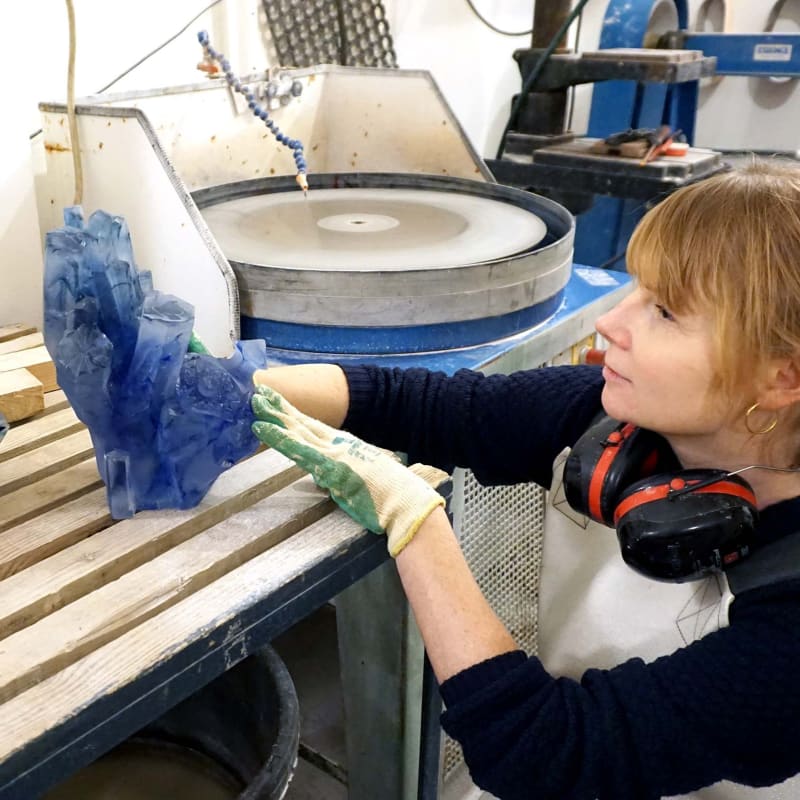My series "Archetypical Architectures as Found and Imagined Around Latheronwheel," draws on the cultural history of glass, specifically the history of glass in both vernacular and sacred architecture. This work is a continuation of my "Imaginary Crystallisations Series" and merges the architectural ruins and stone structures found in the Caithness, Scotland, region with the idea of glass as linked to a simulacrum of naturally occurring crystals and semi-precious stones.
The German Expressionists in the early 20th century sought to reinterpret, in an eclectic fashion, the glass-crystal symbolism as a metaphor for transformation of a post-war society in both aesthetic and social terms. They embraced a mode of expression that was streaked with Romantic sensibility, curiosity in the irrational, and heightened sensory awareness.
The basic orthogonal system that underlies most of Western architecture is mainly ignored in my work to such a degree that the intentionally disorienting, colorful, and translucent glass forms emerge as a transfigured extension of nature, an artificial crystal that amalgamates with mountainous crystal formations.
The sculptural forms are not intended or perceived as fixed and measurable, nor as an ideal conjunction of forms. On the contrary, if there is an ideal, it is in the shifting kaleidoscopic forms that are continuously moving out of chaos toward a potential perfection, which is, however, never fully attained and always in the process of becoming.
